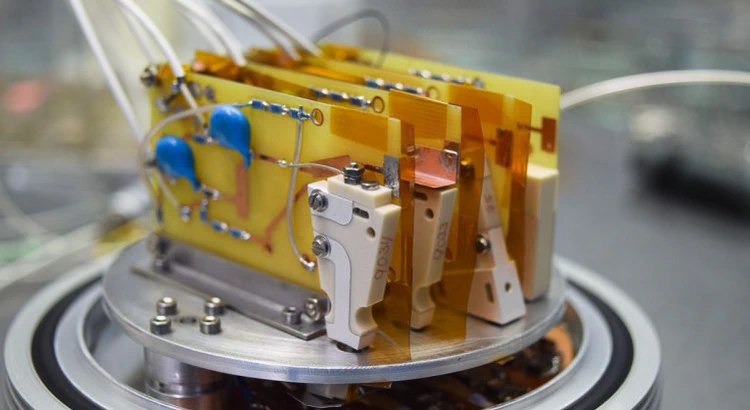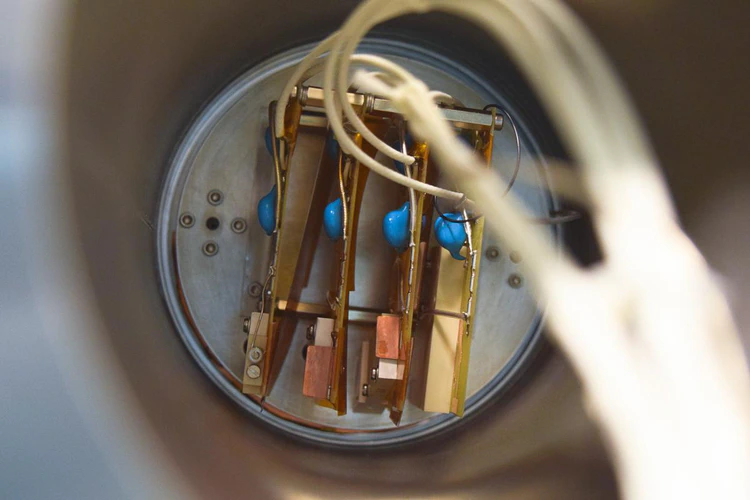
Detector Testing
Current and near future space missions to the gas giant systems imply instrumentation that is specific to extreme space environments dominated by high background radiation or very long mission lifetimes.
The lifetime of a space plasma instrument is, beside other factors, highly limited by the lifetime of the detectors. The latter ones, on the other hand, are highly sensitive not only to the particle species of interest, but also to the background radiation.
Provoked by the IRF instruments for the JUICE mission, a small test facility has been established to test the degradation and lifetime of channel electron multipliers (CEMs) for the JDC and the JNA instrument.
The incident radiation is simulated by secondary electrons, which are emitted from an aluminum surface through UV photons. Eight UV-LEDs, thermally connected to the housing, serve as a source.
Technical specifications
- Dimensions Chamber (inside)
- cross with $100 mm$ diameter, $216 mm$ length | Pressure
- <$10^{-6} mbar$
- Temperature
- Room temperature
- Logging
- Automatic logging of counts
Manual logging of three temperatures in chamber, room temperature, pressure and pulse height profile possible - Vacuum Flanges
- $2$ DN 100 ISO-K
- Vacuum Feed Throughs
- List of possible connectors available on request
- Dimensions Mounting Plate
- $ mm$ width, $ mm$ length
- Material Mounting Plate
- Aluminum
- Pattern Mounting Plate
- Individual for every detector
- Particle Source
- UV-photons converted to photo electrons through scattering
- Optional Equipment
- Residual gas analyzer (will influence the testing)

Photos: Philipp Wittmann, IRF
